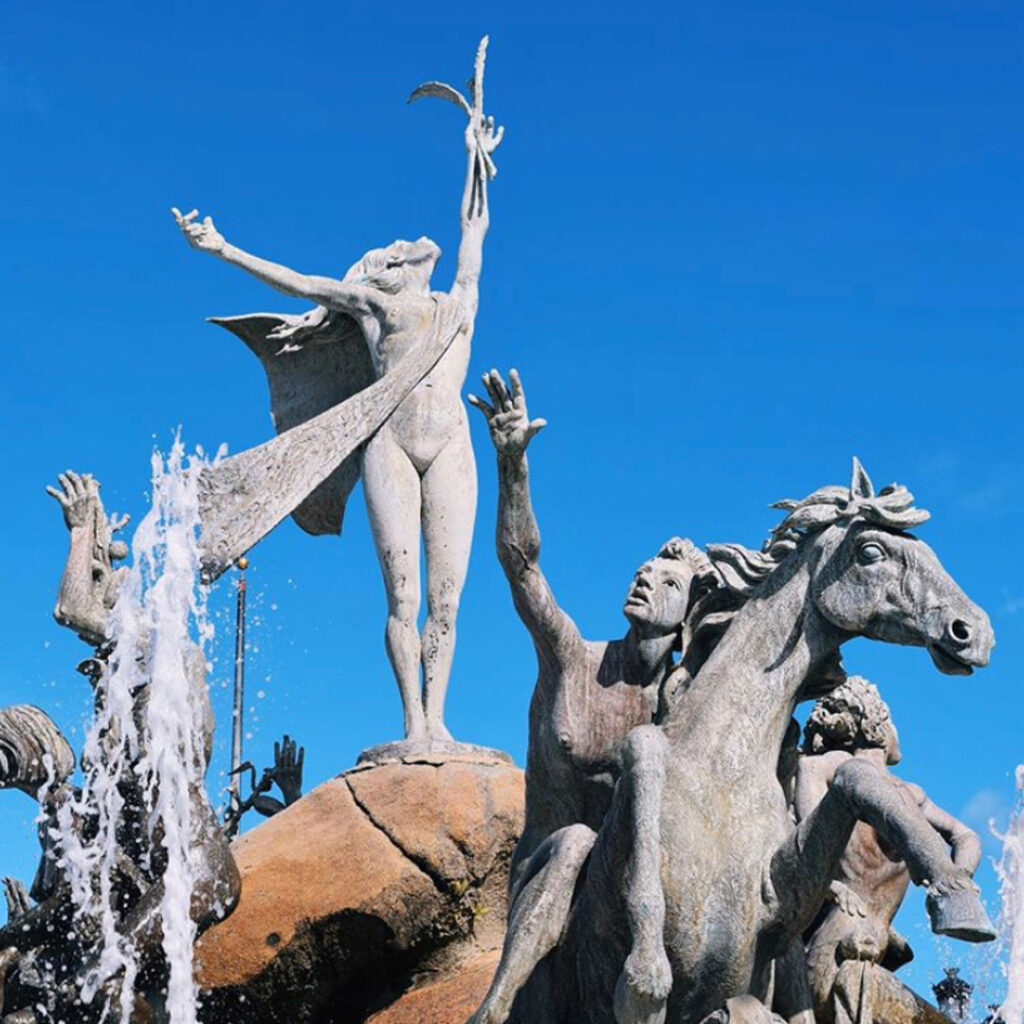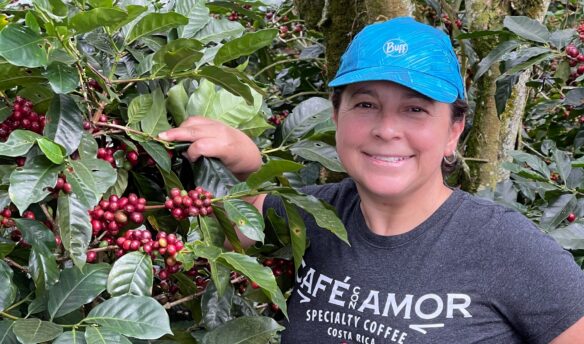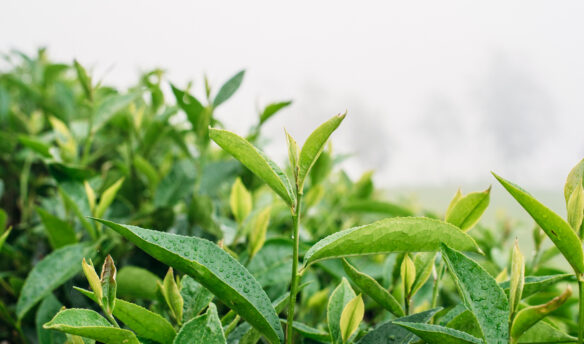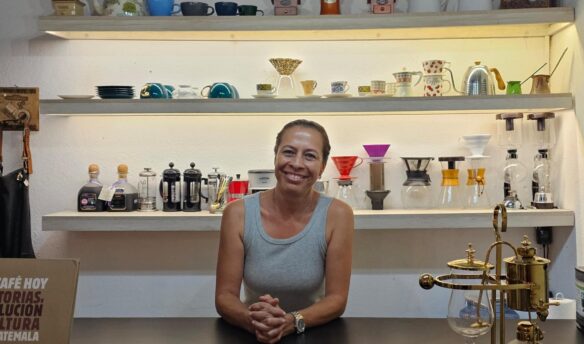Photo courtesy of David Dávila
Despite the prevalence of Afro-Latinos in the Western Hemisphere, their stories, particularly in coffee, have gone largely ignored. As Latin Heritage month comes to an end, it’s essential that we take a moment to celebrate and acknowledge the contributions of Afro-Latinos in the industry because without them, coffee would not exist as we know it today.
The sun shines on the streets of Old San Juan; the palm trees wave as the breeze flows off the Atlantic Ocean and into the Caribbean Sea. Platanos and fried yuca are being served in restaurants, a freshly brewed cup of cafecito is being poured in Abuela’s house, salsa and bomba music can be heard in the distance. Every part of Puerto Rico pays tribute to its past and the people who have occupied the island for centuries.
This semi-state colony-meets-commonwealth is, in fact, the United States, and it’s one of the few U.S. territories that grow coffee. On the island, outside of the La Princesa prison—a prison known for having witnessed some of the most gruesome acts against humanity including the use of radiation on Albizu Campos, one of the island’s most famous independent leaders, a Harvard graduate, and an Afro-Latino—stands a fountain called Raíces, or “roots” in English. The fountain’s statue depicts the three ethnic groups that created modern day Puerto Rico: Blacks, Europeans, and Taínos, or Native Puerto Ricans. These three ethnic groups are not just the fabric or makeup of Puerto Ricans, but throughout Latin America.
Despite the prevalence of Afro-Latinos, or Black Latinos, in the Western Hemisphere, their stories, particularly in coffee, have gone largely ignored. It’s as though their voices were written out of the story of coffee although history affirms that it is by their sweat and blood that coffee took root in the Americas. As Latin Heritage month comes to an end, it’s essential that we take a moment to celebrate and acknowledge the contributions of Afro-Latinos in the industry because without them, coffee would not exist as we know it today. This article, in many ways, is an attempt to end the erasure of their narrative through the amplification of their narrative in coffee.
A Starting Point Towards Recognition
In 1988, the U.S. Congress established “Hispanic Heritage Month,” now known by most as Latin Heritage Month from September 15 to October 15. Prior to Congressional approval, every president since Johnson referred to it as Hispanic Heritage Week, consistently noting the importance of celebrating the diverse cultural heritage and contributions of Latino Americans. Although an important step forward, let’s acknowledge upfront that their contributions should not be relegated to just one week or even one month on our calendar year.
September 15 happens to be the day most of Central America celebrates their independence from Spain. Following their independence movements, Central American nations, including Nicaragua, all formed part of the New Mexican Empire, which reached as far north as California, extended to Texas, and as far south as Costa Rica. Before the Dutch settled in New York in 1624 and the city of Boston was established, the Spanish founded the cities of St. Augustine (1565) in Florida and Santa Fe (1610) in New Mexico. It’s safe to say that Spanish speakers were living on land that is now recognized as part of the United States generations before the Revolutionary War. So, too, were indigenous Americans and Africans whose voices and stories have largely been erased from our national narrative when not neatly packaged into romanticized stories that glorify the oppressors of the past. It’s past time that we earnestly celebrate and recognize the stories and achievements of Latinos across the board in the United States including in the coffee industry.
The Roots of Racism in Coffee
I’d be remiss not to mention that in Latin America the terms “Hispanic,” “Latino,” or “Latinx” are not used as these terms are a North American invention. Although national identity changes from country to country, the majority of individuals in Latin America or America Latina distinguish themselves primarily by their nationalities and then their ethnic group.
As an ethnic group, the Latino community is as diverse as it comes, as depicted by the Raíces fountain in Old San Juan. Latinos share many cultural similarities regardless of skin color; however, the scourge of racism, in various degrees, is very much alive throughout Latin America. In recent history, the term “Afro-Latino” has been used in academia within the United States to shed light on the lack of representation and erasure of Latinos of African ancestry. It’s important to note that this erasure is also endemic in the coffee industry. Too often, the experts on coffee speak about the product outside of its historical context, without regard for the complicated layers of history that brought us to where we are today.
Historically, one of the greatest contributing factors to the erasure of Afro-Latinos in coffee—and from much of the Latin American narrative—was due to the “Casta system” created and imposed by Spanish and Portuguese settlers. Upon the European conquest of the Americas, Europeans brought with them enslaved people from as far north as Senegal to as far south as Angola on the African continent. As Europeans began to have relationships with Native Americans and Africans, the Casta system was created to determine one’s place in society based solely on race. This system dictated that a person’s behavior, personality, and social status were inherently tied to race which would carry on from generation to generation.
Over 16 different categories were created to categorize Spain’s colonial subjects. In the Casta, Iberians or white Europeans sat at the top of the pyramid in two sub-categories, which included the Peninsulares and Criollos. These two sub-categories were followed by a combination of mixed races including Mestizos. The Indios, who were the offspring of two indigenous parents, were placed in the middle of the pyramid while “Negros,” or descendants of two African parents born in the Americas, were at the very bottom. Despite a great deal of interracial mixing (many times through rape), anyone born of a darker hue was understood to have been born without any chance of true freedom or upward mobility.
The vestiges of this tightly knitted social construct remain in much of Latin America and even within Latino communities in the United States. In fact, in Latin American, discrimination, colorism, and one’s last name can still determine the level of access you have to capital as a coffee producer and where you land on today’s social ladder, which is usually at the very bottom if you’re Black.
The African Experience in Latin America
However, it is the ancestors of Afro-Latinos, enslaved Africans, who were the first to cultivate coffee on the island of Saint Domingue (modern day Haiti and the Dominican Republic), Puerto Rico, Colombia, Brazil, Venezuela, Ecuador, and Peru. In Peru, most of the coffee farmers were historically Black and were left to labor the fields under oppressive conditions. Coffee production through slavery in Brazil was so horrendous that most enslaved Africans did not survive more than seven years. Brazil was also the last nation in Latin America to abolish slavery in 1888, and by then more than 4,000,000 enslaved Africans had already been brought to their shores. In Brazil it was often said “Brazil is coffee, and coffee is the Negro,” so it was well understood, even then, that Blacks were at the heart of coffee production.
The Dominican Republic, a nation that traded its production of sugarcane and coffee, for cattle ranching is a prime example of how the Casta system affects modern day society in regards to racial classification and the erasure of Black narratives. Despite having a large percentage of citizens with African ancestry, its national narrative is squarely focused on its ties to Spain, not Africa.
Dominicans have been known to literally whitewash their national figures while identifying themselves as “indios,” instead of “Black.” Many of the coffee producers working on Dominican farms today are of Haitian ancestry or are migrant workers. There are a multitude of reports that highlight their abuse, exploitation, and mistreatment solely on the basis of the color of their skin. The erasure of their contributions in the coffee industry has seeped into the U.S. supply chain because their stories, as is the case throughout the Americas, are ignored and left untold.
To authentically celebrate Latin Heritage Month, we must make a conscious effort to recognize the oppressive history on which our industry was built. But we can’t afford to stop at acknowledgment. Just as the Raíces statue in Old San Juan depicts the stories of the three main ethnic groups—Blacks, Europeans, and Taínos—that created modern day Puerto Rico, we must amplify and depict the underrepresented narratives of Afro-Latinos and Black men and women in coffee throughout the supply chain. It’s time to end the erasure.


















